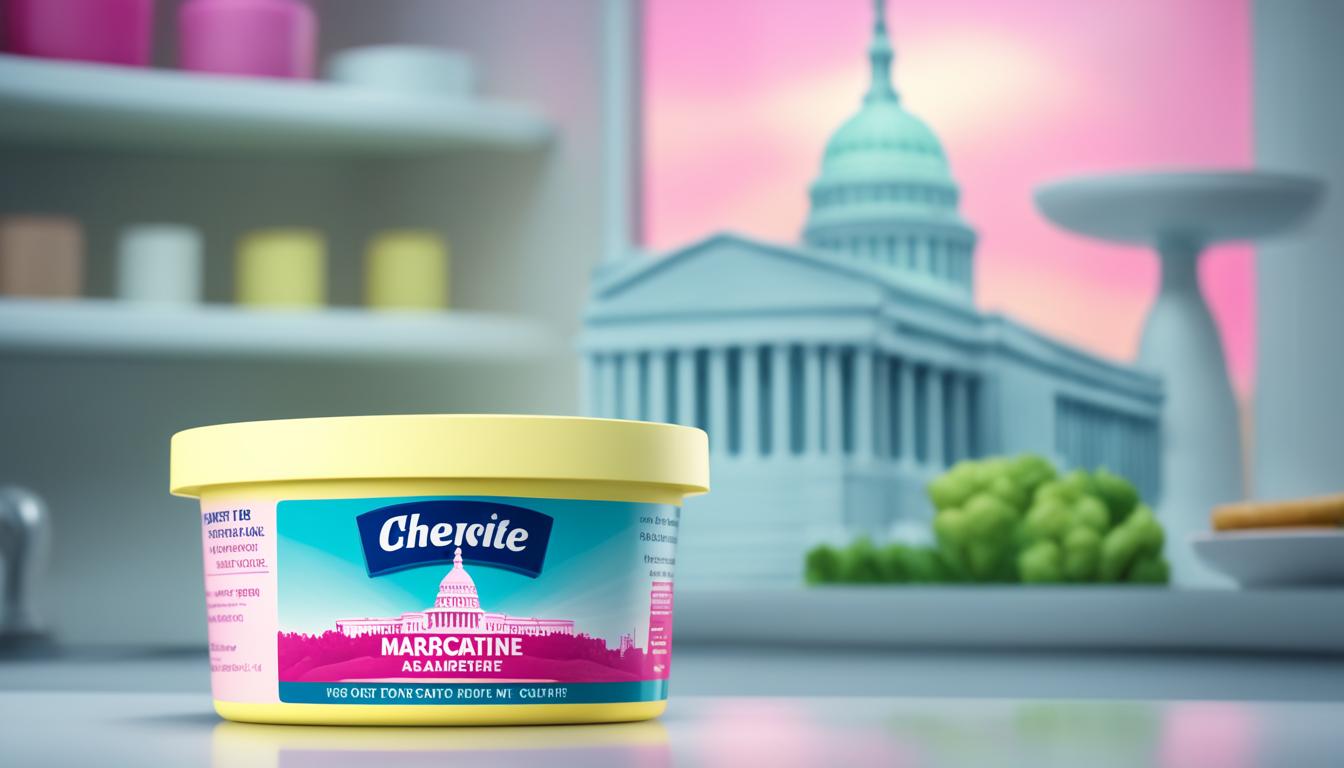In the late 19th century, America saw a big food fight called the “Butter Wars.” This started when margarine came out as a cheaper alternative to butter. The dairy industry felt threatened and wanted strict rules on this new product.
Minnesota, the top butter producer in 1920, strongly opposed margarine. In 1885, it was one of the first states to ban oleomargarine production and sale. Governor Lucius Hubbard even called margarine an “abomination.”
The dairy industry fought hard to protect their interests. They tried to stop margarine from becoming popular. Some states even made laws that made margarine pink. These laws were meant to make margarine less appealing to people.
Key Takeaways
- The “Butter Wars” began in the late 19th century with margarine’s introduction
- Minnesota banned oleomargarine production and sale in 1885
- Dairy industry protections led to strict regulations on margarine
- Some states required margarine to be dyed pink
- Food coloring laws were used to differentiate margarine from butter
The Rise of Margarine and the Dairy Industry’s Response
In the 1860s, a French chemist created oleomargarine for Napoleon III’s armies. Soon, it made its way to American kitchens. The first U.S. patent for oleomargarine was granted in 1873, leading to fast growth in the industry.
As margarine became more popular, it caught the eye of those pushing for better Consumer Labeling Requirements.

The dairy industry saw margarine as a threat. They worked hard to get laws passed to protect their business. Their efforts succeeded in 1886 when Congress made new Agricultural Policies.
These policies included a two-cent-per-pound tax on margarine and high fees for manufacturers. This was a big step for federal regulations.
Dairy farmers argued that margarine was a fake version of butter. They said it went against America’s farming values. Margarine makers, however, saw it as a healthier option.
This debate between tradition and new ideas became a big part of Historical Food Legislations. It has influenced how we regulate and label food even now.
Pink-Dyed Margarine Law: A Colorful Chapter in Food Legislation
In 1891, Minnesota made a bold move in the Butter vs. Margarine Debates. The state passed a law requiring margarine to be dyed pink before sale. This law effectively stopped margarine sales in Minnesota during the 1890s.
The state’s Supreme Court backed this pink law, causing a stir in Oleomargarine Control.
By 1898, 26 states had laws against yellow margarine. Vermont, New Hampshire, and South Dakota took it a step further. They made margarine pink, pushing the limits of Margarine Taxation and rules.
The U.S. Supreme Court stepped in in 1898. It ruled that laws based on color were unconstitutional. This was a big change in food laws. It showed how government rules and consumer products are linked. Interestingly, this period of food regulation has parallels with other lesser-known historical events, showing the complex nature of American laws.
These color rules were part of a bigger plan. They tried to make margarine different from butter and reduce its popularity. The pink-dyed margarine law is a clear example of how Margarine Taxation and rules influenced consumer choices and the industry in late 19th-century America.
Federal Intervention and Taxation of Margarine
In 1886, the federal government made a move in the margarine debate. They passed the Oleomargarine Act, allowing margarine to be colored but taxed it at two cents per pound. This was the beginning of laws about food coloring and labeling for consumers.
By 1902, Congress made a new rule. They raised the tax on colored margarine to 10 cents but lowered it for uncolored types. This was a big hit for margarine makers. They found a way around the rules by selling plain margarine with yellow dye capsules for people to mix at home. This shows how agricultural policies can change what consumers buy.
World War II changed everything. With butter becoming scarce, margarine use soared. By 1950, Congress removed the 1902 tax. This change was like the end of the vampire panic in New England. Old fears were replaced with new understanding.
Wisconsin, a big dairy state, was the last to change its ways. It kept its anti-margarine laws until 1967. This shows how deeply agricultural policies can affect local laws. The story of margarine teaches us how labeling rules change with society’s needs and knowledge.

Leave a Reply